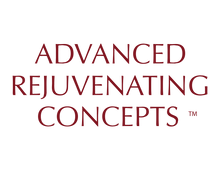Vitamin A, Retinol & Retinoids

Retinol is the most researched and mainstay ingredient in both prescription and cosmeceutical skin care products—and may also be the least understood. Since its use for acne as early as 1943, retinol and its esters have been explored and improved to become a viable treatment for healthy skin maintenance, acne, and correcting photoaged skin.
Why is Vitamin A Beneficial for The Skin?
An essential vitamin to our skin, retinol and its esters are found throughout the epidermis where they are responsible for cell renewal. Unfortunately, there are a variety of factors that deplete the amount of vitamin A in our skin: poor nutrition, UV exposure, oxidative stress, and intrinsic aging. Replenishing your skin’s vitamin A content topically can offer several benefits:
- Retinol plays a vital role in epidermal renewal and keratin synthesis, and contributes to the strength of collagen and elastin proteins.
- Retinol helps our skin filter UV rays while preventing burning and redness.
- When paired with other beneficial antioxidants, retinol can help enhance our skin’s defense against photoaging and improve the visible signs of aging.
- From aging skin to acne, retinol helps improve skin health and function.
Types of Retinol
All forms of vitamin A have the potential to metabolize into the body’s most useful form, retinoic acid. This is why the term retinol or retinoids are used frequently in describing the class of vitamin A products. However, there can be a significant difference in the effect the ingredient has on the skin—which is why some retinoids are only available through a prescription.

COSMECEUTICAL RETINOL
The classification of compounds that are cosmeceutical forms of vitamin A: retinol, retinal, retinyl acetate, retinaldehyde, and retinyl palmitate. These ingredients are metabolized in the epidermis where they are either converted to retinoic acid and used, or stored in the epidermis as retinyl palmitate. Cosmeceutical retinoids are widely available and do not require a prescription for use.
Retinol and its esters have the potential to irritate the skin. The most gentle, retinyl palmitate, is made with a fatty acid chain and takes longer to activate in the skin, making it suitable for most all skin types, particularly sensitive skin.
PRESCRIPTION RETINOIDS
Tretinoin (trans-retinoic acid): Originally created as an acne treatment, tretinoin has evolved to become one of the leading anti-aging prescriptions available for skin rejuvenation. Prescription Names: Aberela, Airol, A-Ret, Atralin, Avita, Retacnyl, Refissa, Renova, Retin-A, Retino-A, ReTrieve, Stieva-A, Ziana
Adapalene / Tazarotene: This vitamin A derivative is used for the treatment of comedonal acne and works by inhibiting cell growth and differentiation (opposite of tretinoin), and the formation of comedones. Adapalene is combined with benzoyl peroxide for a more aggressive acne treatment under the name Epiduo. Prescription Names: Clear, Differin, Gallet, Teva, Epiduo / Avage, Tazorac, Zorac
Isotretinion (oral): Designed to reduce the size of oil glands and cell growth, this prescription is only used for individuals with severe acne vulgaris or node formations. Prescription Names: Absorbica, Accutane, Amnesteem, Claravis, Myorisan, Sotret, Zenatane
Using Retinol at Home
Retinol is a vital component to a skin care regimen. Here are a few tips to help guide you with retinol use:
- Use retinol at night to rejuvenate your skin while you sleep and alternate the use of your retinol with a glycolic cream or serum. The exfoliating and regenerative benefits of each product have the potential to dramatically improve skin tone and texture.
- Unfortunately, photosensitivity is one of the most significant side effects of a topical vitamin A application (and hydroxy acid use). A daytime regimen consisting of a vitamin C serum and sunscreen will help prevent UV damage and redness.
- Avoid using retinol and glycolic products within 48 hours of a chemical peel procedure. In most cases, these products can increase your risk of irritation after a professional peel.
- Acne management with a prescription retinoid should be monitored with the administering physician and/or skin care professional. Consult with your professional before including a beta hydroxy acid (salicylic), benzoyl peroxide, and/or sulfur product in your acne regimen. Over-use of exfoliating and oil reducing ingredients can cause irritation, inflammation, or excessive dryness, and should be limited.
For Skin Care Professionals
Prescription and cosmeceutical retinol use needs to be considered when performing an aesthetic treatment or compiling a home regimen. Side effects of retinol use can include dryness, peeling, irritation, and/or sun sensitivity. Chemical peel procedures may be amplified, increasing the risk of a chemical burn while facial waxing may wound delicate skin.
Never perform an exfoliating or waxing procedure on an individual who is using isotretinoin, or has used isotretinoin within the past 6 months. Severe wounding of the skin can occur.
Learn more about Advanced Rejuvenating Concepts skin care products.
Professional Find a Retailer
References Cited
Sorg O, Saurat JH. Topical Retinoids in Skin Ageing: A Focused Update with Reference to Sun-Induced Epidermal Vitamin A Deficiency. Dermatology 2014;228:314-325
Higgins S, Wesley N. Topical Retinoids and Cosmeceuticals: Where is the Scientific Evidence to Recommend Products to Patients. Cosmetic Dermatology 2015;4(2):56-52
Duell E, Kang S, Voorhees J. Unoccluded Retinol Penetrates Human Skin in Vivo More Effectively Than Unoccluded Retinyl Palmitate or Retinoic Acid. J Invest Dermatol. 1997;109(3):301-5.
Brand names of prescription retinoids are trademarked by their respective pharmaceutical company.






